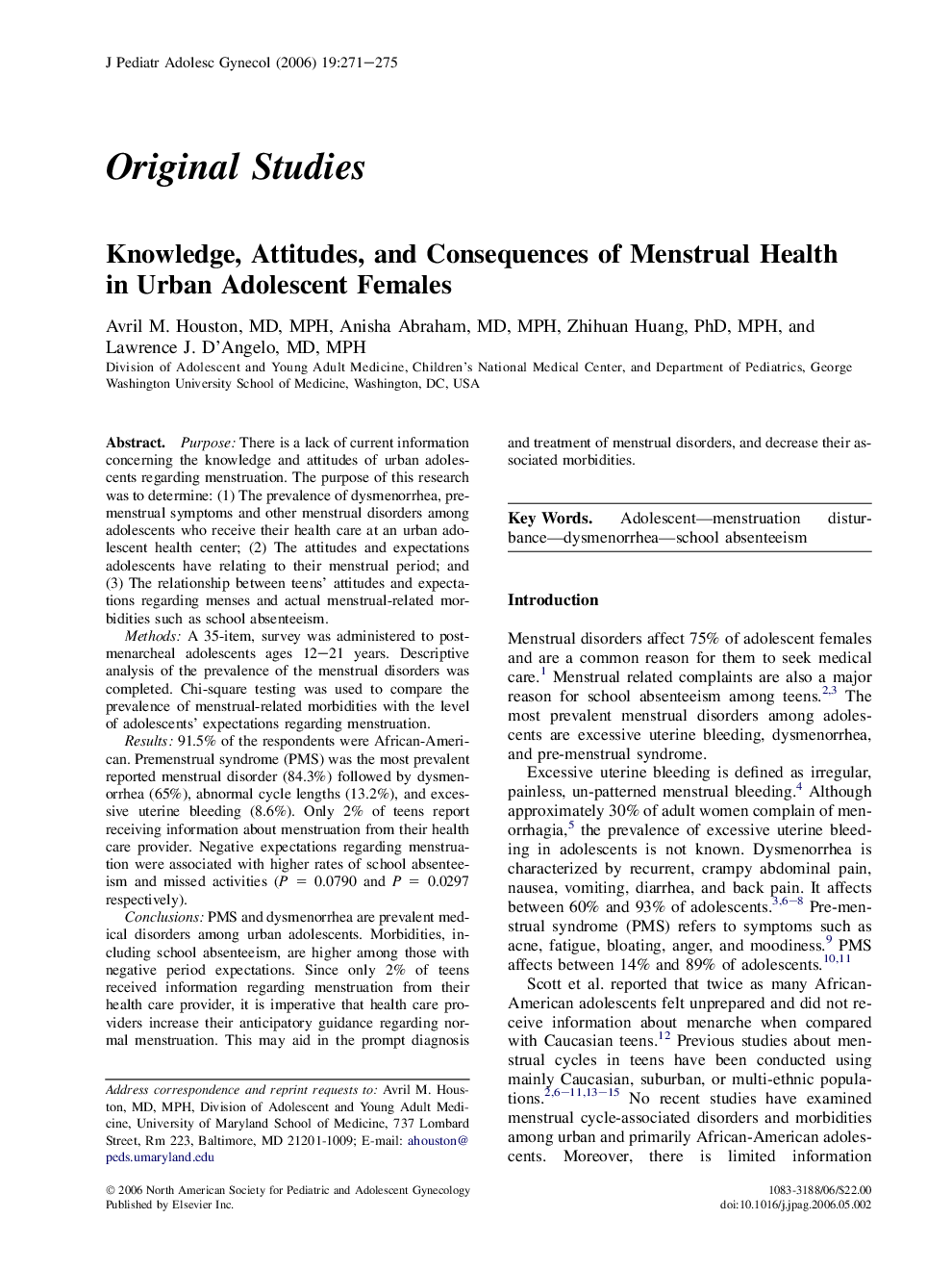| Article ID | Journal | Published Year | Pages | File Type |
|---|---|---|---|---|
| 3963491 | Journal of Pediatric and Adolescent Gynecology | 2006 | 5 Pages |
PurposeThere is a lack of current information concerning the knowledge and attitudes of urban adolescents regarding menstruation. The purpose of this research was to determine: (1) The prevalence of dysmenorrhea, premenstrual symptoms and other menstrual disorders among adolescents who receive their health care at an urban adolescent health center; (2) The attitudes and expectations adolescents have relating to their menstrual period; and (3) The relationship between teens' attitudes and expectations regarding menses and actual menstrual-related morbidities such as school absenteeism.MethodsA 35-item, survey was administered to postmenarcheal adolescents ages 12–21 years. Descriptive analysis of the prevalence of the menstrual disorders was completed. Chi-square testing was used to compare the prevalence of menstrual-related morbidities with the level of adolescents' expectations regarding menstruation.Results91.5% of the respondents were African-American. Premenstrual syndrome (PMS) was the most prevalent reported menstrual disorder (84.3%) followed by dysmenorrhea (65%), abnormal cycle lengths (13.2%), and excessive uterine bleeding (8.6%). Only 2% of teens report receiving information about menstruation from their health care provider. Negative expectations regarding menstruation were associated with higher rates of school absenteeism and missed activities (P = 0.0790 and P = 0.0297 respectively).ConclusionsPMS and dysmenorrhea are prevalent medical disorders among urban adolescents. Morbidities, including school absenteeism, are higher among those with negative period expectations. Since only 2% of teens received information regarding menstruation from their health care provider, it is imperative that health care providers increase their anticipatory guidance regarding normal menstruation. This may aid in the prompt diagnosis and treatment of menstrual disorders, and decrease their associated morbidities.
